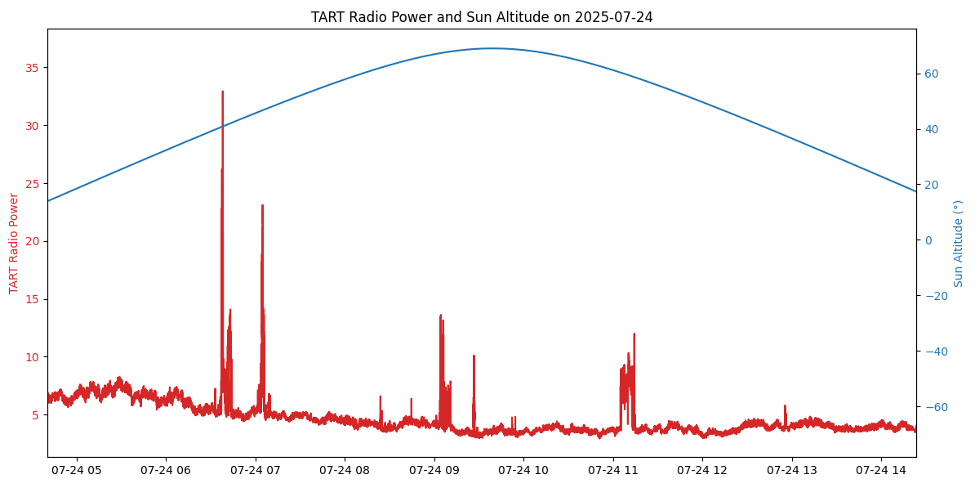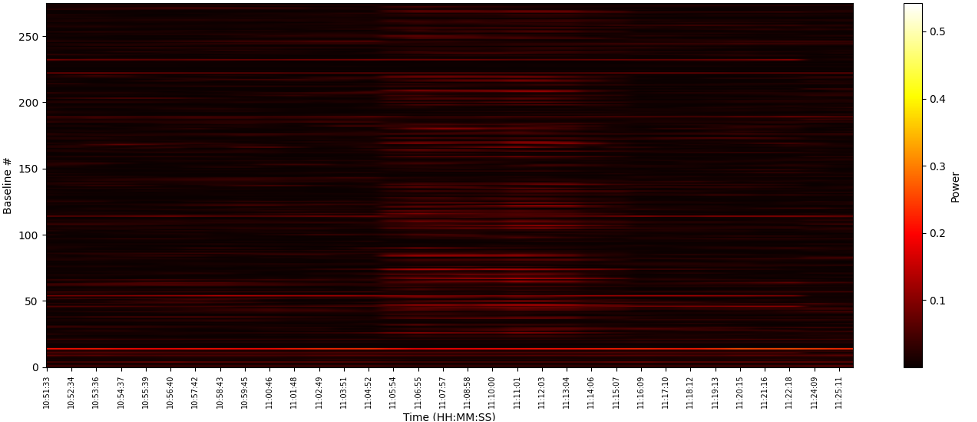written by Brian Mutula and Mary Dusabe
Introduction
The Transient Array Radio Telescope (TART) is a compact radio telescope designed for monitoring radio signals from satellites and space phenomena such as solar activity. Towards the end of August 2024, the Kenya Space Agency (KSA) partnered with the TART development team from New Zealand, through the Electronics Research Foundation, to install TART at the Technical University of Kenya (TUK) in Nairobi (Latitude: –1.292°, Longitude: 36.826°, Altitude: 751 m). The location near the equator is ideal because it provides a wide and balanced view of both the northern and southern skies, making it well-suited for continuous space monitoring.
TART consists of 24 antennas working together to observe radio signals. It operates at a frequency of 1.575 GHz, which falls in the L-band of the radio spectrum—commonly used for GNSS (Global Navigation Satellite Systems). The telescope has a 2.5 MHz bandwidth and a baseband frequency of 4.092 MHz, meaning it processes a narrow yet precise range of signals. Its sampling rate of 16.368 MHz enables high-resolution data capture, allowing scientists to detect rapid changes in radio emissions. The system operates in visibility mode (vis), where the data collected measures the combined signal strength and phase differences between antenna pairs, essential for analyzing sources of radio emissions in the sky.
Monitoring solar radio bursts
Solar radio bursts (SRBs) are powerful bursts of radio energy released by the Sun during solar flares and coronal mass ejections (CMEs). These events send high-energy particles and intense radio waves into space. When they enter our upper atmosphere, they can interfere with satellite communications, disrupt radio broadcasts, and degrade the accuracy of GNSS-based navigation systems like GPS. Data from TART’s 24 antennas was analyzed to measure changes in radio power received from the sky. The system combines signals from every pair of antennas (called baselines), and by summing these signals, the total radio power at each moment in time is determined.
Throughout the month of July 2025, several periods were observed where the measured radio power increased significantly for 5 to 20 minutes. Comparison with official solar flare reports from GOES X-ray data showed that many of these power spikes occurred at the same time as solar flares. This suggests that the observed radio power enhancements were caused by solar radio bursts (SRBs) rather than random noise or local interference. For example, on 24 July 2025, analysis show multiple spikes which coincided with C1 to C3 solar flare reports from https://www.spaceweatherlive.com/.

